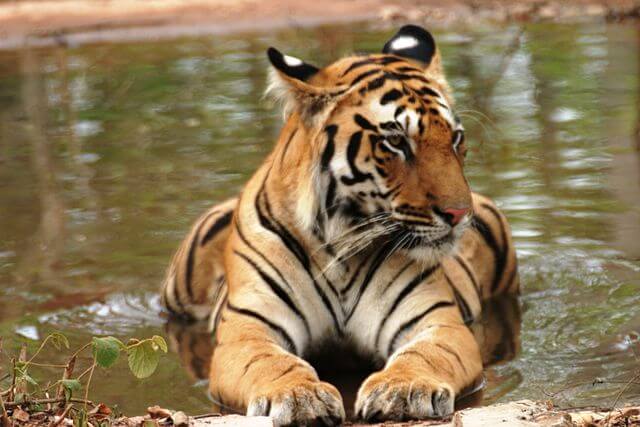
India and Bhutan have both reported significant increases in their wild tiger populations, offering a glimmer of hope for tiger conservation efforts.
India, known as the home of 75% of the world’s wild tigers, revealed an impressive total of 3,682 tigers. This remarkable achievement represents an annual growth rate of 6%, a major conservation success story considering that India’s tiger population had dwindled to less than 2,000 in the 1970s due to rampant poaching and habitat loss.
“India’s exemplary efforts in tiger conservation and the increase in tiger numbers is not just a statistic but a testament to the determination and commitment of the nation,” union minister of forest, environment and climate change Bhupender Yadav said.
Meanwhile, Bhutan, the tiny Himalayan kingdom, reported 131 tigers, marking a substantial 27% increase from its last count in 2015.
“This is a significant achievement and an indication of a very healthy ecosystem,” said Chimi Rinzin, Country Director of WWF-Bhutan.
The Bhutanese tiger population survey even discovered evidence of tigers breeding at various altitudes, suggesting Bhutan’s potential to contribute to the recovery of regional tiger populations.
These positive outcomes are crucial, especially as the world grapples with the increasing loss of species driven by factors like climate change. Tigers, as top predators, play a pivotal role in maintaining the intricate balance of ecosystems.
Despite these gains, it’s essential to acknowledge that tigers remain an endangered species. Over the past century, the global wild tiger population has declined by approximately 95%, largely due to habitat loss from human encroachment and the illegal wildlife trade.
Nepal has also made significant strides in tiger conservation, doubling its tiger population over the past decade. However, as tiger populations grow, concerns have arisen about conflicts with humans.
In India and Bhutan, where conservation efforts are underway, the competition for resources is leading some tigers to venture outside protected nature reserves in search of food, potentially bringing them into conflict with nearby villages. Government statistics reveal that between 2019 and 2021, over 100 people were killed in tiger attacks in India.
“If tigers are to keep thriving, human-tiger conflict must continue to be addressed,” Bhutan’s national tiger survey report and the WWF said
“Increased conflict results in decreased tolerance for tigers and poses a significant threat to both local people and tigers themselves,” they said.
Stuart Chapman, who leads the WWF’s tiger preservation initiative, recognises the challenges that come with increasing tiger populations. While celebrating the rise in numbers, it’s crucial to address the complexities of coexistence between tigers and human communities. Balancing the conservation of these magnificent creatures with the safety and livelihoods of local residents remains an ongoing challenge.
He added: “Bhutan is perfectly positioned to be a global champion for approaches that support coexistence between tigers and people.”
——————————————————————————
At Natural World Fund, we are passionate about stopping the decline in our wildlife.
The decline in our wildlife is shocking and frightening. Without much more support, many of the animals we know and love will continue in their decline towards extinction.
When you help to restore a patch of degraded land through rewilding to forests, meadows, or wetlands, you have a massive impact on the biodiversity at a local level. You give animals a home and food that they otherwise would not have had, and it has a positive snowball effect on the food chain.
We are convinced that this is much better for the UK than growing lots of fast-growing coniferous trees, solely to remove carbon, that don’t actually help our animals to thrive.
This is why we stand for restoring nature in the UK through responsible rewilding. For us, it is the right thing to do. Let’s do what’s right for nature!
Donate today at https://naturalworldfund.com/ and join in the solution!

